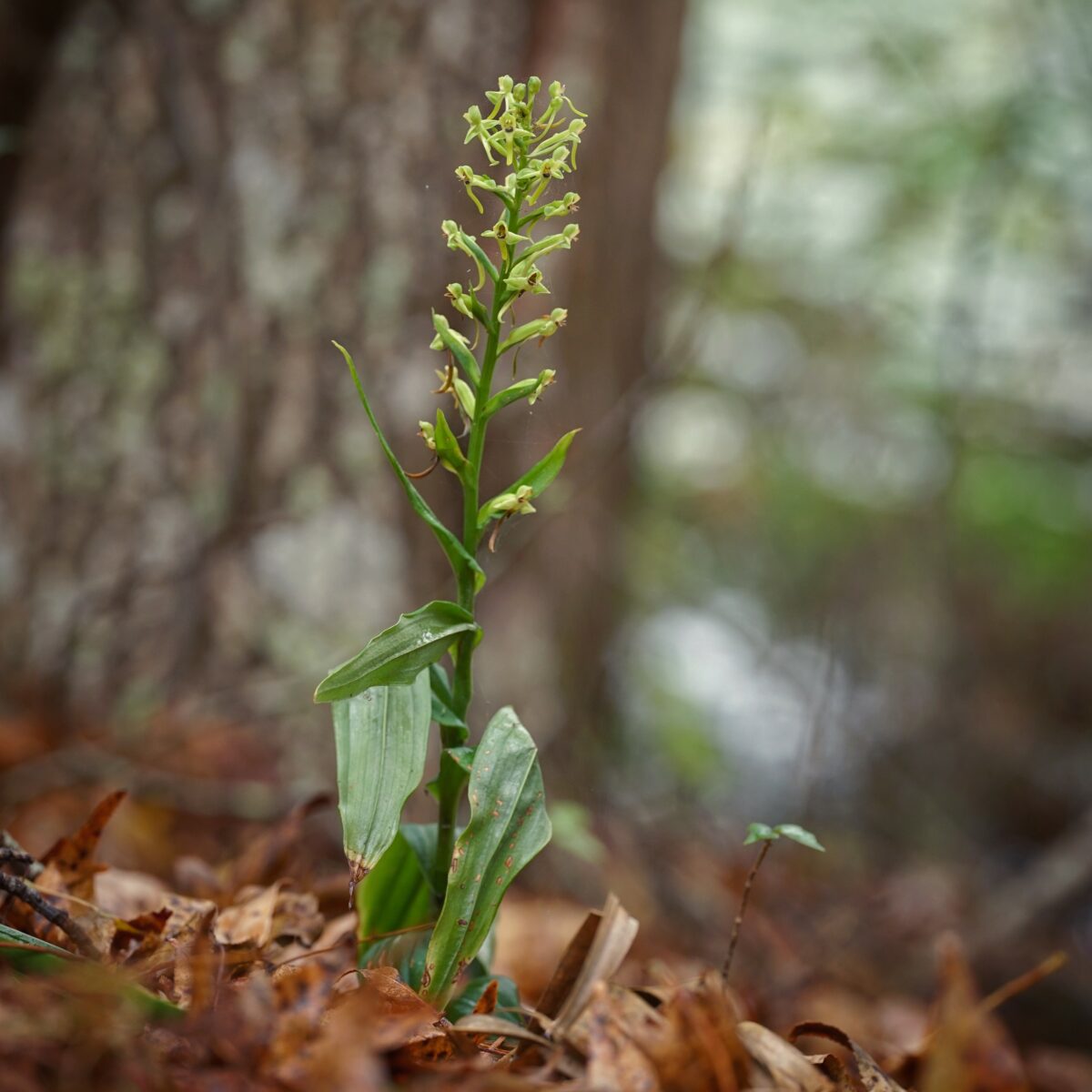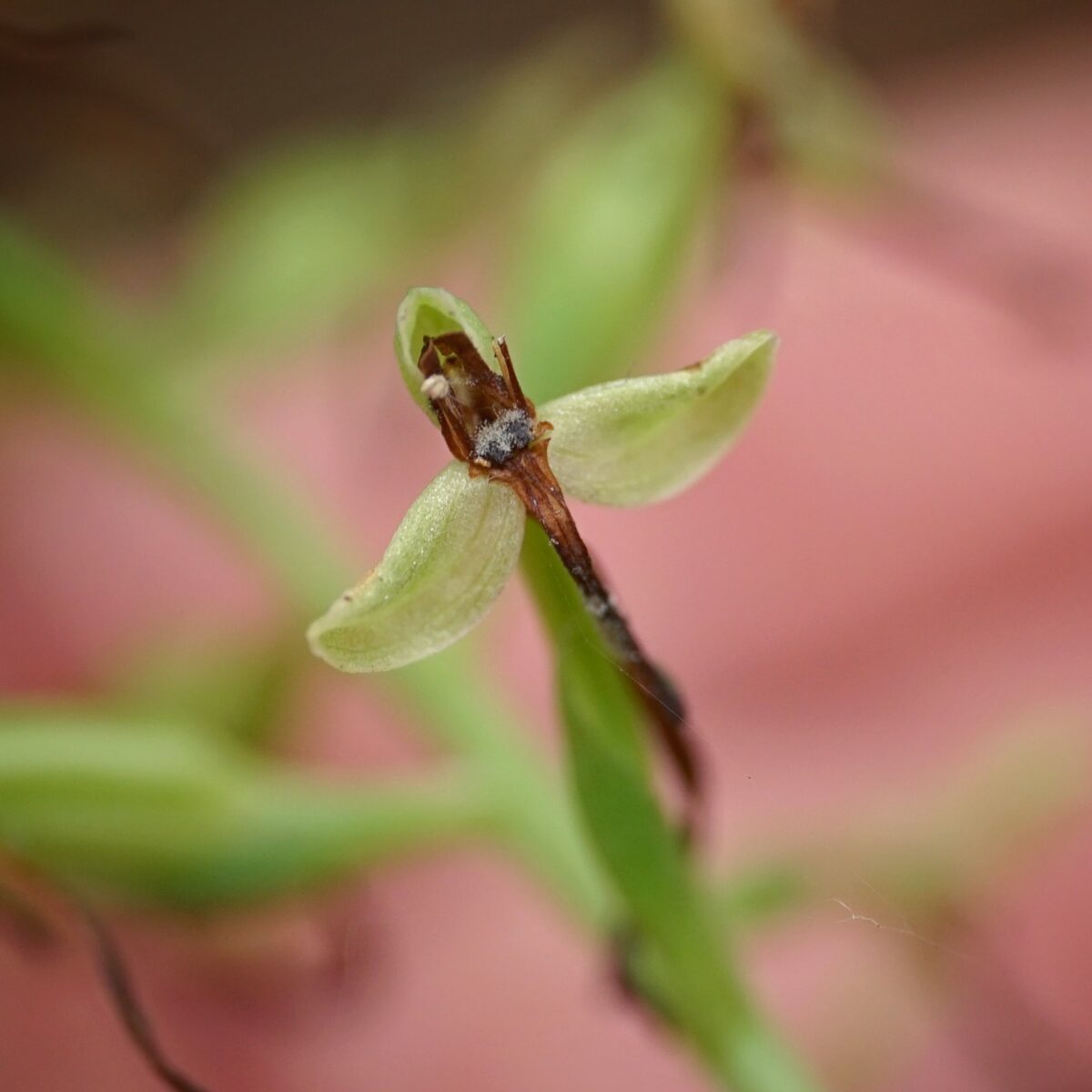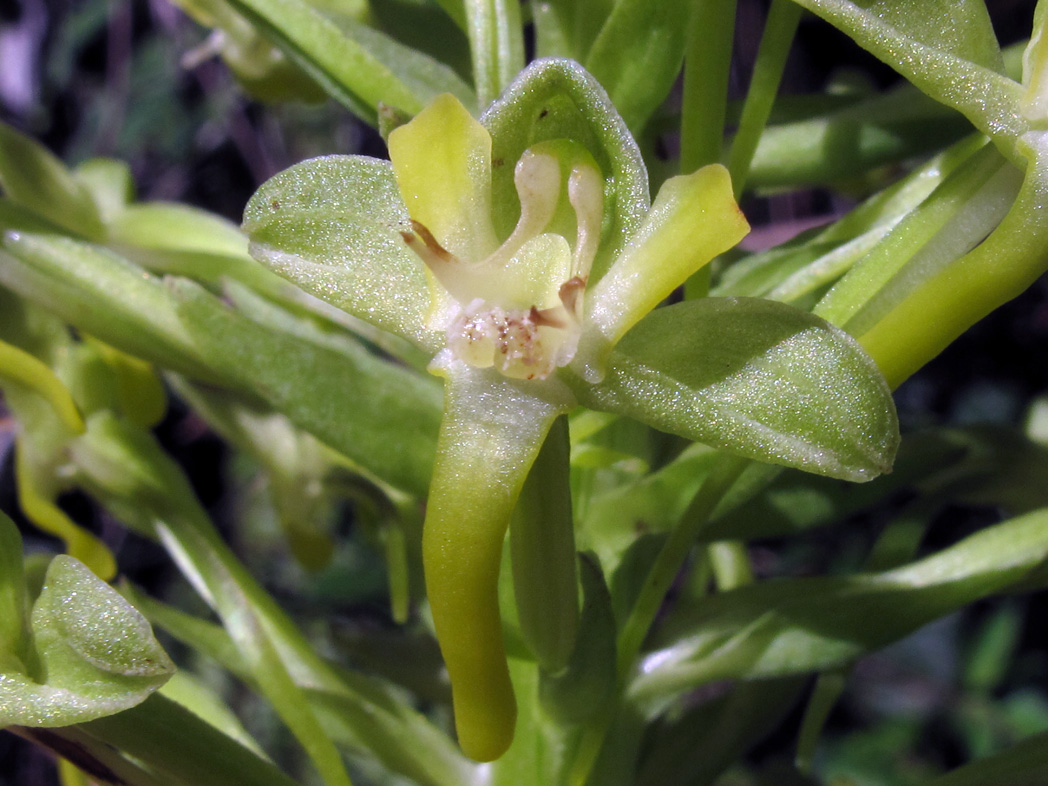Toothpetal false reinorchid
Toothpetal false reinorchid (Habenaria floribunda) by Alan Cressler, Lady Bird Johnson Wildflower Center. Click on terms for botanical definitions. View post as a PDF
Toothpetal false reinorchid is one of Florida’s most common terrestrial orchids. It is found in swamps and hardwood forests throughout most of peninsular Florida and typically blooms fall through winter. The semi-showy flowers are aromatic, emitting either a sweet fragrance or an unpleasant odor, depending on who you ask.
Toothpetal false reinorchid flowers are relatively small (about ¼–½ inches), green to yellowish-green and resupinate. The corolla is composed of two earlike lateral petals and a spurred labellum, each with a toothlike projection at its base. The calyx is formed by two wide-spreading lateral sepals and a single dorsal sepal that curves to form a hood over the column. Flowers are bilaterally symmetrical and born on erect terminal racemes in numbers of 10 to 30 or more. Leaves are bright green, fleshy and elliptic to lanceolate with an acute apex. They are alternately arranged and decrease in size as they ascend the stem. The fruit is an upward-pointing capsule with many tiny seeds.


The genus name Habenaria is from the Latin habena, meaning “whip,” “halter” or “reins,” and may reference the spurred lip. The species epithet floribunda is from the Latin flores or “flowers,” and abundans or “abundant.”
Family: Orchidaceae (Orchid family)
Native range: Nearly throughout peninsula, from Duval, Bradford, Alachua and Levy counties south to Miami-Dade; not vouchered in Monroe County mainland or the Keys
To see where natural populations of Toothpetal false reinorchid have been vouchered, visit florida.plantatlas.usf.edu.
Hardiness: Zones 8A–10B
Lifespan: Perennial
Soil: Moist to wet, well-drained sandy or calcareous soils
Exposure: Partial shade
Growth habit: 12–15” when flowering
Garden tips:Toothpetal false reinorchid is best suited for moist naturalistic landscapes. Although not widely cultivated, it is occasionally available from nurseries that specialize in Florida native plants. Visit www.PlantRealFlorida.org to find a nursery in your area.

